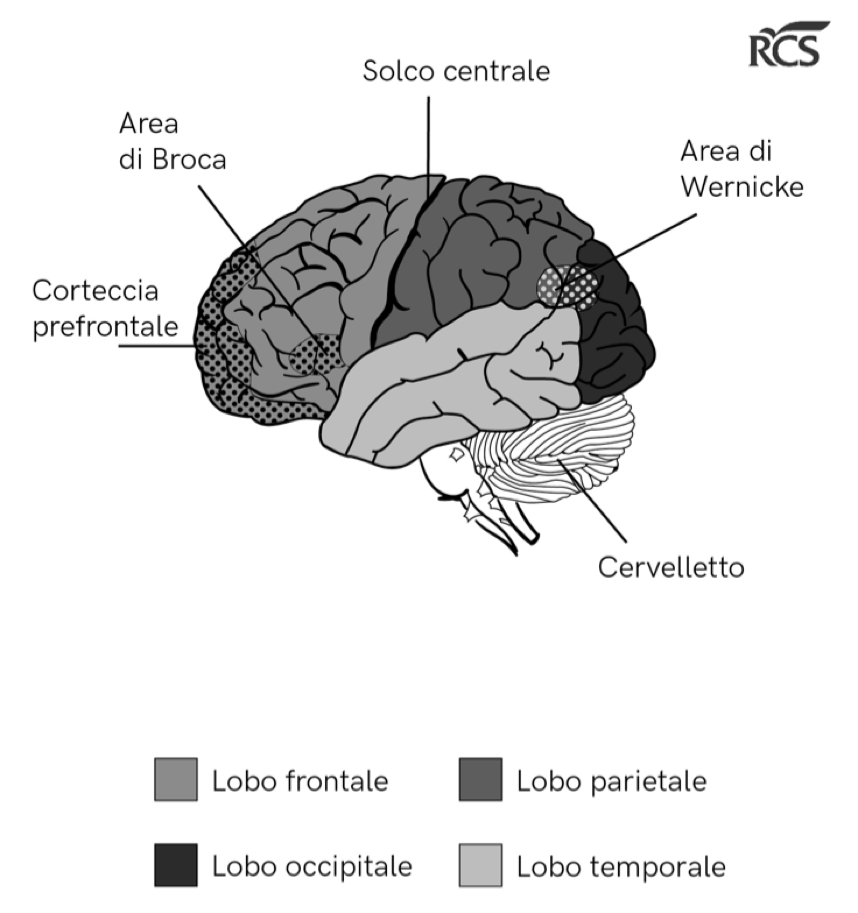From March 8th out in the news stands the book “Mind and Memory” with Corriere della Sera and Gazzetta dello Sport.
Written by the psychiatrist and science communicator Danilo Di Diodoro with the help of illustrations from Nabu Creative Studio, the book guides us throughout the fascinating mechanisms that regulate our mind.
Here is a preview from the author:
It would be misleading to talk about Mind without talking about Complexity.
According to a paradoxical, but truthful statement that I quote in my book, if the brain was simple enough to be understandable, we would not be complex enough to be able to understand it.

The human brain – lateral view. Production: Nabu Creative Studio
How can you then go through your life without studying this extraordinary tool?
In my book “Mind and Memory” I tried to talk about the mechanisms of function of our mind to the broad audience.
Among the topics of the book you can find: the relationship between mind and brain, consciousness and unconsciousness, memory, intelligence and emotions, psycotherapy and the mechanism of action of psychotropic and psychedelic drugs.
You will also find an unexpected chapter about the perception of Time explaining how the mechanism of action of our mind is straddling contemporary physics and psychology.
Throughout the book I will quote scientific studies, especially the most recent ones, always trying to make the reading experience engaging and stimulate further in-depth analysis.
I will address the topics by introducing a series of short stories since telling and listening to stories is what our mind loves the most. I will not therefore organize the notions in the traditional way you may find in psychology or psychiatry handbooks.
By reading my book you will get aware of the enormous potential of our mind, but also of its limits, faults and complexity. Further scientific research is needed to better understand it.
2. HOW TO TRAIN OUR MIND
Throughout the whole book, particularly in the last section, I placed tome tips about how to stimulate our mind and keep it active.
I also highlighted how toxic a sedentary lifestyle, bad diet, cigarette smoke and alcohol are for our mind.
More than the uptake of specific molecules such as multivitamin supplements – often emphasized and without true scientific foundations – fighting stress and depression and establishing strong social relationships is fundamental to keep our mind active.
Indeed, we are physiologically social beings.
Concerning this point we live in an outstanding era: Internet and social media provide us a broad plethora of opportunities and stimuli.
As stated in my book, it would be really a pity not to exploit all the opportunities we are offered: having the chance to big community party represented by exploiting each of us our mind, but without knowing and usurping all of its extraordinary capacity.
3. CUES TO EXPLORE MORE
The reference bibliography of such a broad topic would be endless.
For the ones who want to study more I put at the end of the book some essential references, for either a broad or expert audience.
While writing my book I used both these references, international research articles from the biomedicine and psychology fields papers and evidence based sources such as the Cochrane Library and UpToDate, significant landmarks for a scientific approach to medicine.
Hoping to guide you through a useful and surprising journey, we look forward to meeting you in the newsstands!
Danilo Di Diodoro,
Psychiatrist and Science journalist at CORRIERE DELLA SERA

